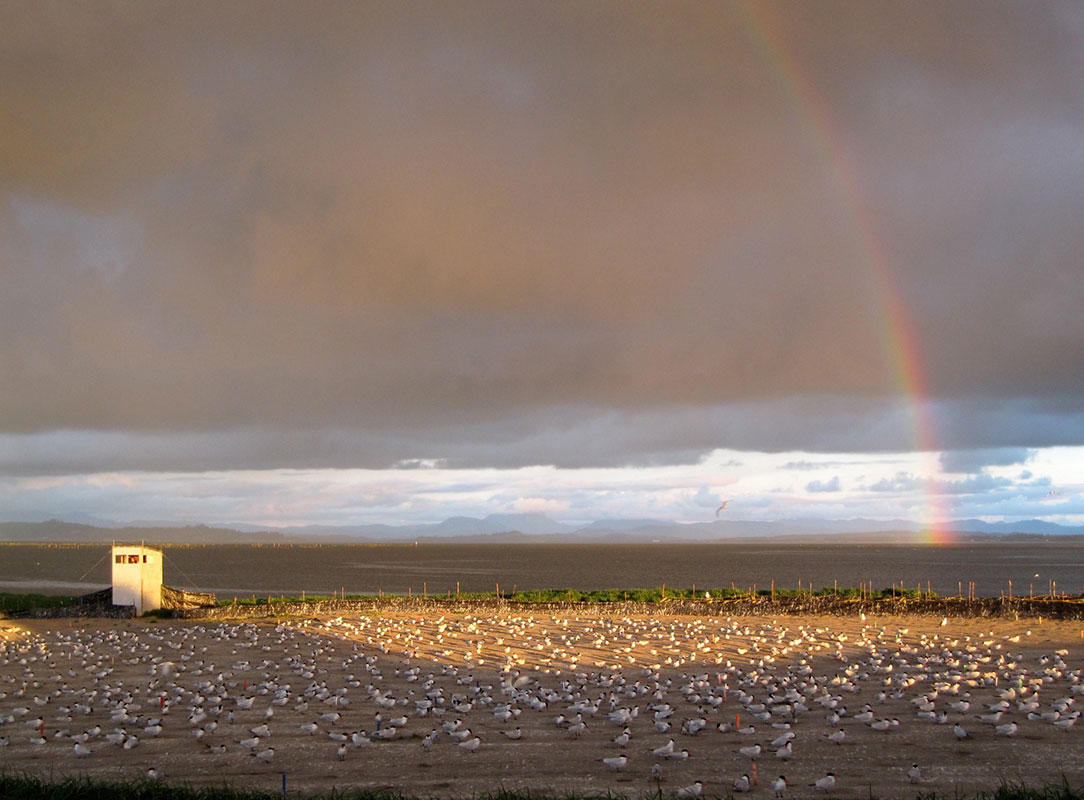 Caspian Tern Management to Increase Survival of Juvenile Salmonids in the Columbia Basin
Caspian Tern Management to Increase Survival of Juvenile Salmonids in the Columbia Basin
Predation by Caspian terns (Hydroprogne caspia) is a factor limiting the recovery of some Endangered Species Act (ESA)-listed populations of salmonids (Oncorhynchus spp.) from the Columbia River basin, especially steelhead trout (O. mykiss). This prompted the development and implementation of two separate management plans, one in the Columbia River estuary and the other in the Columbia Plateau region, to reduce the impact of Caspian tern predation on smolt survival. Caspian terns nesting at managed breeding colonies within the basin were relocated to alternative nesting islands created for terns outside the basin. Both plans were successful in significantly reducing smolt losses to Caspian terns nesting at managed sites; however, new developments have led to regression in smolt survival gains associated with tern management. Adaptive management to prevent terns at managed colonies from relocating to nest elsewhere in the basin and to improve nesting opportunities for Caspian terns outside the basin are needed to maximize the survival benefits to ESA-listed salmonids from management. Adaptive management is also necessary to ensure the long-term viability of the Pacific Flyway population of Caspian terns, whose breeding population has declined by more than 50% since the two management plans were implemented.
-Bird Research Northwest
Click here to see full report



